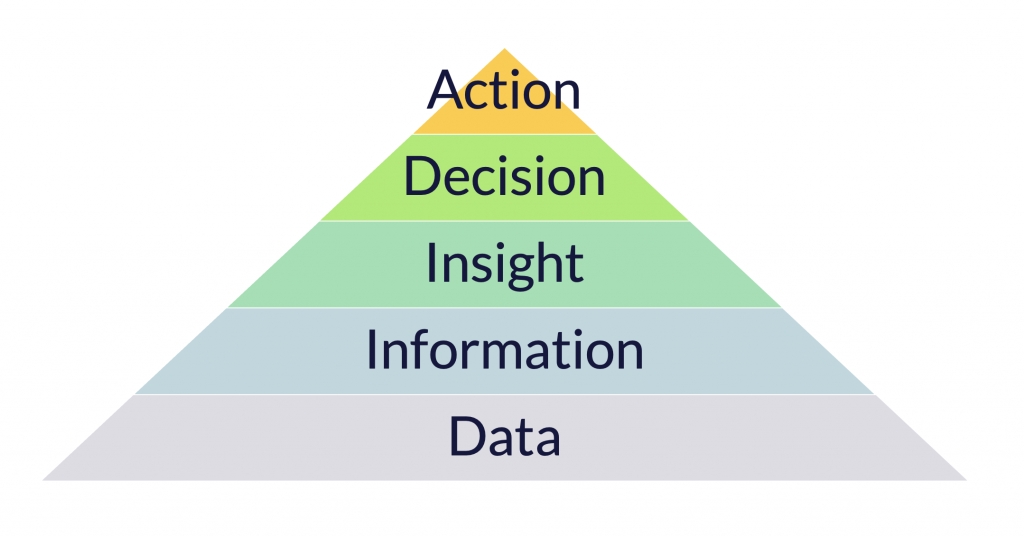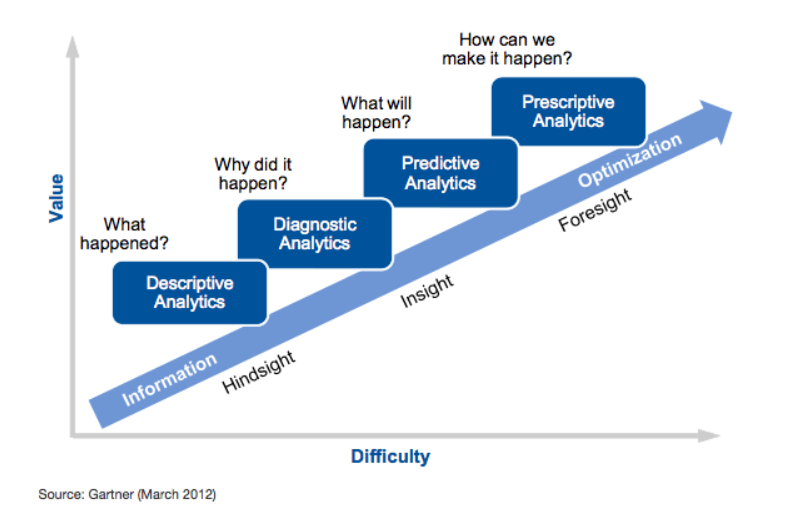[Article 1] The Four Types of Solar Analytics
This is the kickoff article for a new series called What You Need to Know About Solar Analytics. In this series, Steve Voss, VP of Advanced Analytics at Power Factors, talks through what you need to know about solar analytics to get the most value out your data. Don’t miss an article: Follow Power Factors on LinkedIn.
The Four Types of Solar Analytics
By Steve Voss, VP of Advanced Analytics at Power Factors
Thousands of decisions are made every day across the solar industry. And most of these decisions could be improved with easier access to quality analytical insights from operational solar photovoltaic (PV) plants.
We all know why: Insights from quality analytics facilitate and improve day-to-day monitoring, operations, maintenance, management, and reporting. They also have the potential to influence and fine-tune system designs, procurement decisions, investment strategies, risk mitigation, contract negotiations, and even policy decisions.
But how do we get from a deluge of data to quality analytics we can use?
In this series, What You Need to Know About Solar Analytics, we’ll take an in-depth look at how data analysis can be applied — in the real world — to solar power plants to get us the information and insights we need to make faster, better decisions.
The Problem of Getting Value from Data

Of course, getting from data to action is a process. To get the most value from data analytics, you must:
- Improve the quality of content at every step of the process.
- Automate as much of the process as possible.
These two goals overlap, intersect, and often compete.
Starting with an Analytics Framework
There are many published analytics frameworks. Many are good; none are perfect for all situations. One helpful system is the Gartner analytics ascendancy model, which identifies four basic types of analytics: descriptive, diagnostic, predictive, and prescriptive.

Applied to solar, this might break down as follows:
- Descriptive Analytics: What happened?
- Example: Inverter 1 failed and was down for one week.
- Diagnostic Analytics: Why did it happen?
- Example: Inverter 1 shut down due to over-temperature conditions caused by poor ventilation.
- Predictive Analytics:What is likely to happen?
- Example: Inverter 2’s internal temperatures are rising indicating poor ventilation and probable shut down.
- Prognostic analytics is a variant of Predictive analytics that adds the dimension of time. What is likely to happen – and when is it likely to happen?
- Example: Inverter 2’s internal temperatures are rising indicating poor ventilation and probable shut down in 7 days.
- Prescriptive Analytics: What should be done to get the desired outcome?
- Example: Proactive maintenance should be performed on Inverter 2 to restore proper ventilation.
The example above considers one narrow but important use case for solar analytics. As Cedric Brehaut noted in his 2018 article “Low O&M Prices Drive ‘Digitalization’ and New Technologies,” the primary sources of operations and maintenance (O&M) costs (i.e., people, vehicles, and tools) are all getting more expensive — even as O&M budgets face constant downward pressure. According to Brehaut, “To reduce maintenance costs and increase plant performance, O&M practices must evolve” to rely more on analytics and optimize the use of conventional resources.
The articles in this series will use the Gartner analytics ascendancy model as a framework from which to explore opportunities to use analytics to drive this transformation. We’ll also touch on opportunities beyond the scope of O&M, focusing on the role of analytics as the solar industry continues to mature and play a bigger role in the power sector as a whole.
Did you find this article helpful? Sign up for our newsletter for the latest in digital asset management, performance optimization and more!
Steve Voss joined Power Factors in 2016 and has over 20 years of solar industry experience. Prior to joining Power Factors, Steve spent a year working with Panasonic Energy Services and nine years with SunEdison as Director of Advanced Engineering. Steve holds an MBA from the University of Wisconsin, Madison, and a Master’s of Materials Science and Engineering from Stanford University. He did his undergraduate work at the University of Colorado, Boulder. Connect with Steve on LinkedIn.
